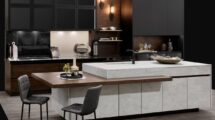Home design is about more than just furniture placement or paint colors. The right finishing touches, like wall art, have the power to transform a room, turning it into a space that reflects your personality and style. Wall art is more than decoration; it’s a key design element that brings balance, depth, and character to your home. By carefully selecting and placing wall art, you can enhance your home’s overall aesthetic and create a space that feels complete.

Why Custom Art Elevates Your Space
Choosing the right wall art isn’t just about picking pieces that match your furniture. It’s about finding artwork that resonates with you and complements the overall design of your home. The team at Canvas n’ Decor states that made-to-order custom art allows homeowners to select designs that perfectly align with their vision. Custom pieces ensure that your wall art is unique, making your home stand out with a personal touch.
Custom art also provides flexibility in terms of size, color, and theme. Whether you’re decorating a minimalist living room or a cozy bedroom, tailor-made pieces can fill the space harmoniously. Unlike mass-produced options, custom artwork offers an opportunity to express individuality and achieve a cohesive design that ties the entire room together.
Setting the Mood with Wall Art
Wall art has the unique ability to evoke emotion and set the tone of a room. For example, abstract pieces with bold colors can energize a space, making them ideal for living rooms or creative workspaces. In contrast, serene landscapes or black-and-white photography create a calming atmosphere, perfect for bedrooms or meditation areas.
The placement of wall art also plays a role in mood-setting. Large, eye-catching pieces above a sofa or bed serve as focal points, drawing attention and anchoring the room’s design. Smaller, more detailed works arranged on a gallery wall add visual interest and encourage closer inspection, making the space feel dynamic and engaging.
By selecting wall art that aligns with the purpose of each room, you can enhance functionality and create an environment that feels intentional and inviting.
Adding Dimension and Balance
Without wall art, even the most beautifully furnished room can feel flat or unfinished. Wall art adds dimension, balancing the visual weight of furniture and other decor elements. For example, a large painting or tapestry can fill empty wall space, preventing the room from feeling sparse.
Balance doesn’t mean symmetry—it’s about achieving harmony between all the design elements in a room. Wall art can act as a counterpoint to heavy furniture or neutral color schemes, adding pops of color or texture that make the space feel dynamic. Mirrors, often considered functional wall art, reflect light and make small spaces appear larger, contributing to the overall design balance.
Tying the Design Together
Wall art has the power to unify disparate design elements within a room. If your furniture, rugs, and curtains don’t seem to work together, the right piece of art can bridge the gap. A painting or print that incorporates colors from different parts of the room can pull the design together, creating a cohesive look.
Using a theme or consistent style across your wall art can also help establish unity. A series of botanical prints in matching frames, for example, brings a sense of order to a room. Alternatively, mixing styles—such as pairing vintage illustrations with modern geometric prints—can create an eclectic yet harmonious design when done thoughtfully.
Making Small Spaces Shine
In smaller homes or apartments, wall art can make a significant impact without taking up precious floor space. Vertical pieces draw the eye upward, making ceilings appear higher and rooms feel larger. Light-colored or reflective pieces, such as metallic prints or framed mirrors, brighten small spaces by enhancing natural light.
For compact areas like hallways or entryways, gallery walls composed of smaller pieces can turn an overlooked space into a design feature. By layering art of varying sizes and styles, you create depth and intrigue, proving that even small spaces can have big design potential.
Investing in Timeless Pieces
Unlike furniture or paint, wall art is easy to update or move to another room, making it a flexible design investment. While trends come and go, timeless pieces such as classic photography, abstract paintings, or traditional landscapes remain stylish for years. Investing in high-quality art ensures durability and provides a lasting sense of sophistication to your home.
Wall art is also valued when sourced from talented or emerging artists. Over time, your pieces may become not just design elements but cherished heirlooms or collectibles.

Wall art isn’t just an accessory—it’s a transformative element that defines the look and feel of a home. Whether you opt for custom art, bold statement pieces, or thoughtfully curated gallery walls, your choices can elevate your space and reflect your personal style. By using wall art to balance, enhance, and unify your design, you create a home that is as visually captivating as it is welcoming. Investing in wall art is investing in the heart of your home’s aesthetic.






